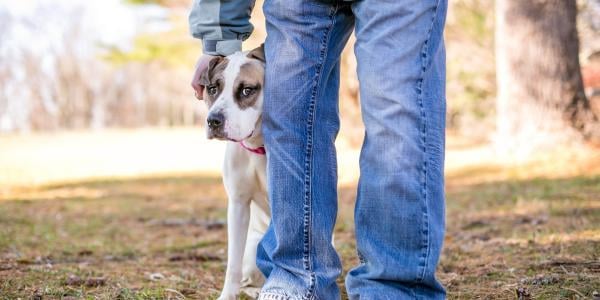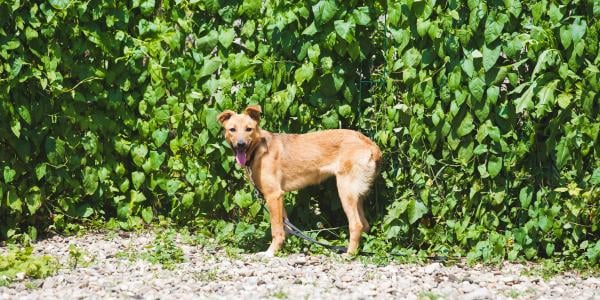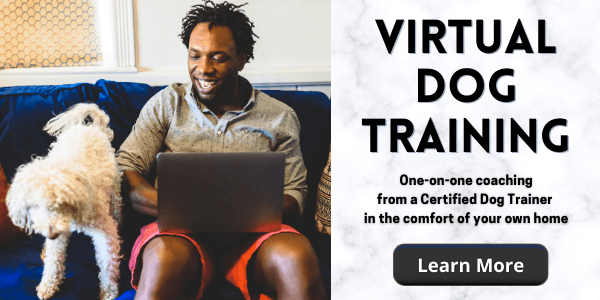 Many dogs can be shy or cautious about meeting new people, whether due to their natural temperament, lack of early socialization, or a negative experience in their past. While it is important to respect a shy dog's boundaries, it is equally vital to help them overcome their fears and build confidence.
Many dogs can be shy or cautious about meeting new people, whether due to their natural temperament, lack of early socialization, or a negative experience in their past. While it is important to respect a shy dog's boundaries, it is equally vital to help them overcome their fears and build confidence.
If you have a shy or timid dog, you can play the Treat Retreat game to help them be more confident in approaching new people.
Treat Retreat, originally coined by the renowned trainer Suzanne Clothier, is designed to create a positive association with unfamiliar people and build confidence by allowing the dog to take control of their environment and decide whether or not they want to interact or not. The Treat Retreat game is also a great way to introduce puppies to new people that prevents inadvertent negative associations from being made during the critical socialization period.
Unlike conventional training methods that force interactions or use food treats to bribe a dog closer to a stranger, the Treat Retreat game focuses on voluntary engagement and empowering the dog to make their own choices. A dog with choices is a more confident dog!
Fear is a main contributing factor in aggressive behavior. I recommend this game for many dogs who struggle with meeting new people and have exhibited fear aggression such as barking, lunging, or biting people who approach them. If your dog exhibits aggressive behavior, it's important to work with a certified dog training and behavior professional to ensure that everyone stays safe, help you learn canine body language, and set up the game for maximum effectiveness.
What You'll Need to Play Treat Retreat
- A Safe Space: Start by setting up a designated area, such as a quiet room or a private corner in your yard, where your shy dog can retreat to if they feel overwhelmed during the game.
- High-Value Treats: Have a supply of high-value dog training treats. These must be something your dog rarely gets and be much better than their usual food or training treats, such as turkey hotdogs, fresh boiled chicken breast, low-fat string cheese, or freeze-dried dog treats.
- Start with a Familiar Helper: When you first introduce this game, start with a person whom your dog is familiar with and comfortable around, such as a family member or a close friend. This person should understand the importance of respecting the dog's boundaries and avoid any sudden movements or loud sounds.
- An Unfamiliar Person: Once you and your dog are comfortable with playing Treat Retreat with a familiar person, then you can begin playing this game with new people.
I recommend starting with a planned session, where someone new to your dog knows ahead of time how to play. This gives you practice in coaching and managing the game before you start playing it with new people while out on walks or in other more uncontrolled contexts.

How to Play Treat Retreat with Your Dog
There are different variations of the Treat Retreat game, but I have included the basic steps for you to follow. Be sure to check out the videos below that show different variations of this game so you can fully understand the process and adjust your setup based on your dog's specific needs.
- Position the familiar person at a comfortable distance from your shy dog. Ideally, this distance should be one where the dog is aware of the person's presence but still feels at ease.
When first starting, having the helper sit down on a chair at an angle from the dog is best. Directly facing and standing can be overwhelming for many dogs. - If your dog looks at or steps toward the person, then your helper should calmly toss a high-value treat to or behind your dog.
Rewarding your dog for acknowledging their presence helps create a positive association. The placement of the reward at a distance from the person doubly reinforces the behavior of showing interest because for most shy dogs, what they really want is distance from the new person. - The helper should reward with tossed treats to or behind your dog each time they willingly choose to move closer or show interest in the person. This process allows the dog to take control of their own interactions and build confidence gradually. They are in control of how close they approach and we reduce any pressure by tossing the treat behind them so they have a chance to retreat and decide what to do next.
- Watch your dog closely for any signs of discomfort or stress. If your dog shows signs of fear or looks away, it means they need more time. Respect their boundaries and have your helper increase the distance if necessary. Allow your dog to approach the person at their own pace.
- Once your dog is confident with the familiar person, gradually introduce new people into the game. However, bear in mind that each dog is unique, and some may take longer to warm up to strangers. Always respect your dog's comfort level and avoid overwhelming them with too many new people at once.
Video Examples of Treat Retreat
Tips for Playing Treat Retreat with Your Dog
- When tossing the treat, coach your helper to gently throw it from the center of their chest. Avoid having them raise their arm to the side or above when tossing the treat, as this can startle many dogs because of the fast motion and position of the arm. When tossing from the center of the chest, it reduces perceived threat.
- Over time as your dog gets more comfortable approaching people, you'll want to layer in movements and position changes. Have your helper slowly move positions and follow movement with a treat toss. Start slow and easy before layering in more movement or faster position changes.
- If your dog is extremely fearful of new people, then you can start at a far distance from a helper and deliver treats to your dog yourself. For example, if your dog looks at the person in the distance, you calmly praise and give them a high-value treat. Don't force them to walk forward, just let them take it all in at their own pace. Reinforce for any instances of curiosity toward the helper.
- Keep Treat Retreat games short and follow your dog's lead. Training sessions should be no longer than 10 minutes or so, but some dogs get tired or overwhelmed faster than others.
- If your dog has a history of nipping at or biting people, then you must ensure everyone's safety through space management. This might include training your dog to wear a basket muzzle for training sessions, having them or the helper separated by a gate or exercise pen, or on a leash and tethered or held at a distance where they cannot make direct contact with the helper.
Get more tips for socializing your puppy with people on our Puppy Socialization Resource Page.
Celebrate Small Victories
Remember, the Treat Retreat game is all about empowering your shy dog and building their confidence in a gentle and respectful manner. Celebrate each small step and victory along the way.
You will need to manage your expectations though. Not all dogs are sociable and super confident, and that's okay. It's actually normal for many dogs to not be all that interested in meeting new people. Your goal is to help your dog not be so fearful because fear increases stress and anxiety. Aim to practice enough so that your dog doesn't exhibit fearful behaviors around new people, such as hiding behind you, trying to run away, tucked tail, ears back, growling, snapping, etc.
But that doesn't mean your dog needs to be comfortable meeting any and everyone. It's also okay if they prefer not to meet anyone up close, as long as they are not fearful in the presence of other people or acting aggressively. Their life can be full and happy without socialization with other people. If your dog is struggling with fearfulness or leash reactivity, the most beneficial thing is connecting with a certified trainer or behavior consultant. They will help you map out next steps for helping them feel more confident.
With patience, consistency, and positive reinforcement, you can help your shy dog blossom into a more confident and social companion.




